The Talpiot/Jesus tomb: point and counterpoint, item 1
Interesting thoughts on the DNA work
http://www.heardworld.com/higgaion/?p=541
Okay, I had intended to leave this topic mostly to my New Testament colleagues, but it’s rather interesting and there seems to be a lot of “talking past” going on. Ben Witherington, together with other New Testament scholars, has issued a press release (through Christian Newswire—why choose such a limited outlet?) listing “Ten Reasons Why the Jesus Tomb Claim is Bogus.” The “ten reasons” are stated as “bullet points,” without much unpacking or analysis. James Tabor, author of The Jesus Dynasty and, as far as I can tell, the only actual scholar who supports the identifications proposed in The Lost Tomb of Jesus, has answered some of these points (though some of his critics don’t seem to have noticed). Let’s lay out both sides of the arguments, using Witherington et alii’s ten points as a structure.
1. DNA Evidence
The “anti-tomb” press release states that “There is no DNA evidence that this is the historical Jesus of Nazareth.” Of course there isn’t, nor could there be. We don’t possess a database filled with the genetic “fingerprints” of first-century CE Galileans and Judeans. Without a sample of DNA known to be that of Jesus of Nazareth, there’s no way that any DNA recoverable from the ossuaries could be “matched” to any particular historical individual.
What available DNA strands could provide is some degree of information about the family relationships between the persons whose bones are in those ossuaries. As it turns out, the only DNA-based claim made by the filmmakers is that the Talpiot tomb’s Mariamne Mara was neither Yeshua bar Yehosef’s sister nor mother. This is a fairly modest claim, and needs to be evaluated for the claim that it is, not for some other claim that critics set up as a straw opponent.
And yet this does not mean that there are no problems with the DNA evidence. The Discovery Channel website specifically says that the DNA tested was mitochondrial DNA (mtDNA):
The human remains were analyzed by Carney Matheson, a scientist at the Paleo-DNA Laboratory at Lakehead University in Ontario, Canada. Mitochondrial DNA examination determined the individual in the Jesus ossuary and the person in the ossuary linked to Mary Magdalene were not related.
As I understand it, the chain of reasoning then goes as follows: (1) The Talpiot tomb is a family tomb. (2) The only women buried in a family tomb would be (a) women who married into the family or (b) women born into the family who, at the time of their death, had never been married. (3) Since Yeshua and Miriamne were not related, Miriamne must have married into the family.
That much seems reasonable, but there remain some unresolved issues. One major problem is the gratuitous assumption that, if Miriamne married into the family, she married Yeshua. Four of the six ossuary inscriptions name men. Why should it be assumed that Miriamne was Yeshua’s wife? Why not Yehudah’s wife, or Yose’s wife, or Matia’s wife? And, of course, the possibility would still remain that she was Yeshua’s daughter, or Yehudah’s or Yose’s or Matia’s daughter, and so on down the line. The full range of possibilities has not been explored. Rather, the filmmakers have jumped to a “sexy” conclusion that is not contravened by the available evidence, but neither is it really supported by the evidence.
Another major problem here is that, if I understand things correctly, mtDNA testing could only reveal whether Yeshua and Miriamne had the same mother, not the same father:
Mitochondrial DNA maternal lineage testing is used to determine whether two or more individuals are related through their mother’s ancestral line. This test may be used to provide additional evidence in difficult maternity cases where the alleged mother is not available for testing, or in cases where a single non-matching genetic system is observed between the alleged mother and the child in question. A single non-matching genetic variation in a maternity test is often the result of a mutation (a random change in the DNA which occurs in the formation of the egg used for conception). Since mtDNA is inherited through the maternal line, all sons and daughters inherit their mother’s mtDNA. However, only daughters pass on their mother’s mtDNA to their offspring. mtDNA is composed of a string of DNA nucleotides (the 4 building blocks of DNA represented by the letters A, C, G and T) in a particular sequence. In the mtDNA maternal lineage test, a short segment of the mtDNA is sequenced (the order of DNA molecules is determined) and the mtDNA sequences from each individual are compared to see if they could come from the same maternal line. Everyone from the same maternal line will have similar mtDNA sequences. mtDNA maternal lineage testing takes much more time to complete as compared to other types of DNA paternity or maternity testing. UNTHSC is one of only a small number of labs in the country capable of performing this type of DNA testing. (University of North Texas Health Science Center at Forth Worth, DNA Identity Lab, with thanks to my student Chris Thomas for introducing me to this aspect of DNA testing)
Since mtDNA testing could only reveal common maternity, if Yeshua and Miriamne had the same father but different mothers, mitochondrial DNA testing would not reveal their common paternity. Filmmaker Simcha Jacobovici appears to be aware of this—see the quotation from the New York Times a bit lower in this post—but apparently he blithely ignores any other possibilities than “related on their mothers’ side” and “married.” And yet, that is at most what mtDNA testing could reveal: that Yeshua and Miriamne had different mothers. Everything else is speculation.
This consideration of DNA testing brings up another, very important issue: why was the only DNA test that was conducted focused on Yeshua’s and Miriamne’s common maternity? The filmmakers also claim that one of the occupants of another ossuary, Maria, was Yeshua’s mother. Why didn’t they test Yeshua’s and Mariah’s mtDNA to see whether Mariah really was Yeshua’s mother? They also claim that Miriamne was the mother of Yehudah bar Yeshua; why didn’t they test Yehudah’s mtDNA to determine whether Miriamne really was Yehudah’s mother? It turns out that the answer is that the filmmakers were impatient. Read more about this in Carl Zimmer’s post on his fine science journalism blog, The Loom (hat tip to Duane Smith—although I also keep Carl’s blog on my RSS feed, I saw the discussion first on Abnormal Interests).
There is another important dimension to the DNA “evidence” that I have not yet seen explicitly discussed (though it may have been discussed and I just missed it). According to the New York Times article that prompted Carl Zimmer’s above-mentioned blog post:
The filmmakers commissioned DNA testing on the residue in the boxes said to have held Jesus and Mary Magdalene. There are no bones left, because the religious custom in Israel is to bury archeological remains in a cemetery.
However, the documentary’s director and its driving force, Simcha Jacobovici, an Israeli-born Canadian, said there was enough mitochondrial DNA for a laboratory in Ontario to conclude that the bodies in the “Jesus” and “Mary Magdalene” ossuaries were not related on their mothers’ side. From this, Mr. Jacobovici deduced that they were a couple, because otherwise they would not have been buried together in a family tomb.
See above on the hasty generalization from “children of different mothers” to “married,” but down here I want to address a different point. The reports I have seen thus far are quite vague on where the DNA came from. Presumably, the DNA came from within the relevant ossuaries. But how do we know that the DNA in the ossuary came from the person named on the ossuary’s inscription? People do not put themselves into ossuaries, and they do not take themselves out of ossuaries. Several different people will have handled the ossuaries and the bones inside of them, not only in the first year but over the centuries, and they won’t have been wearing latex gloves á là CSI. How does Jacobovici know that his lab was really testing Yeshua bar Yehosef’s DNA against Miriamne Mara’s DNA, and not, to be fanciful, Amos Kloner’s DNA against Levi Rahmani’s DNA? Unless the DNA in question can be shown to have come from the person named in the ossuary’s inscription, the DNA evidence is absolutely meaningless for reconstructing the relationship between the parties buried in the tomb.
So Witherington et al. have targeted bullet point #1 against a straw argument. Nobody is claiming that the DNA from the Yeshua ossuary is a “match” for the historical Jesus of Nazareth. The bullet misses its target, since the target is a much more modest claim. Even that more modest claim, however, is rife with difficulties, and very difficult to take as a serious and powerful contribution toward the identification of the Talpiot tomb’s Yeshua bar Yehosef with Christian history’s Jesus of Nazareth.

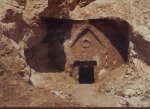
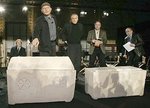






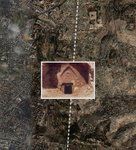


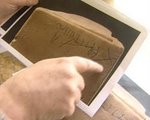






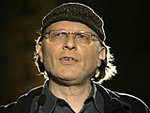

















No comments:
Post a Comment